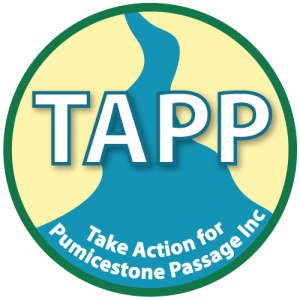Ben Gilby1(USC), Andrew Olds, Rod M. Connolly, Paul S. Maxwell, Susie Chapman, Lucy A. Goodridge Gaines, Christopher J. Henderson, Nicholas L. Ortodossi, Karin Didderen, Wouter Lengkeek, Tjsse van der Heide, Thomas Schlacher
Dr Ben Gilby is a marine ecologist with expertise in the fields of ecological restoration, conservation biology, fish biology and ecology, and fisheries. His research focuses on optimising the ways in which we manage, conserve, and restore ecosystems for greatest ecological, social and economic outcomes.
Abstract:
The marine ecosystems of Pumicestone Passage are significantly threatened by human activities. The effects of habitat loss, catchment runoff and fishing combine to reduce the abundance and diversity of fish assemblages, and to change their distribution. Management can overcome these effects, but the degree to which specific management interventions affect fish assemblages relative to existing impacts remains unclear. Since 2015, USC, Griffith University, Sunshine Coast Council and Healthy Land and Water have collaborated on a diversity of projects seeking to quantify these effects in Pumicestone Passage. This research has progressed, now, to the point that drivers of fish communities are perhaps better understood in Pumicestone Passage than in any other estuary in Queensland. This presentation will cover the extent of studies and surveys conducted in Pumicestone Passage the past decade and will compare the results of these studies with results from other estuaries. We focus on two key case studies. The first, completed in 2015, showed that no fishing areas (i.e. ‘green zones’) in Pumicestone Passage are likely positioned in suboptimal locations if their intent is to enhance the abundance and diversity of fish assemblages. The second, completed in 2020, showed that the Pumicestone Passage Shellfish Reef Restoration Trial increased the overall carrying capacity of fish in the region despite variable runoff. Together, these case studies demonstrate the importance of considering the position and size of coastal habitats for fish and show how these considerations are vital for optimising conservation, restoration and management outcomes in Pumicestone Passage and beyond.
